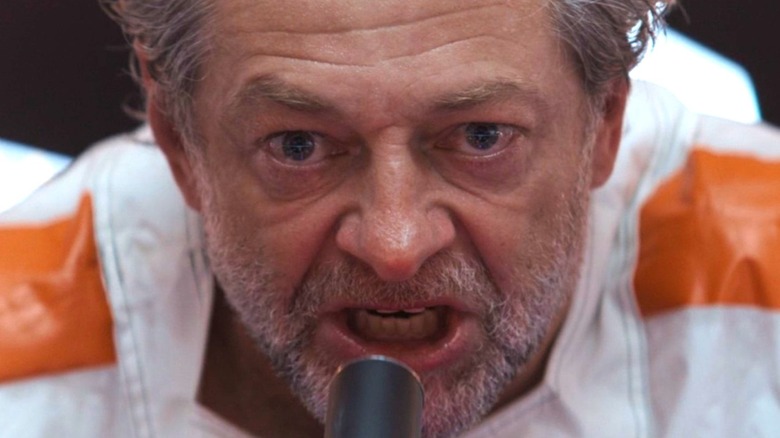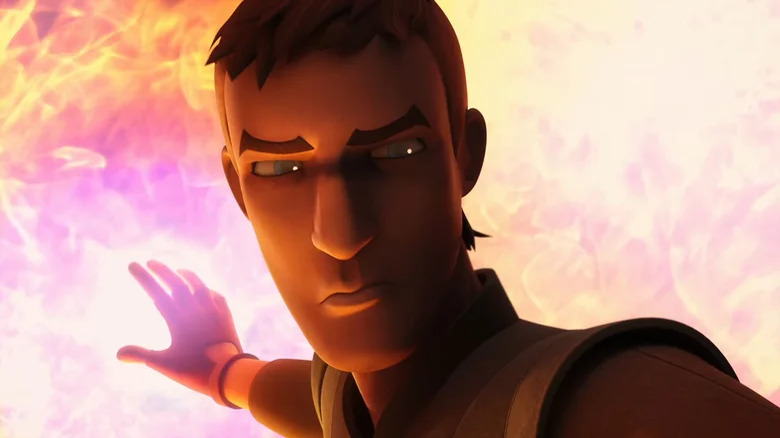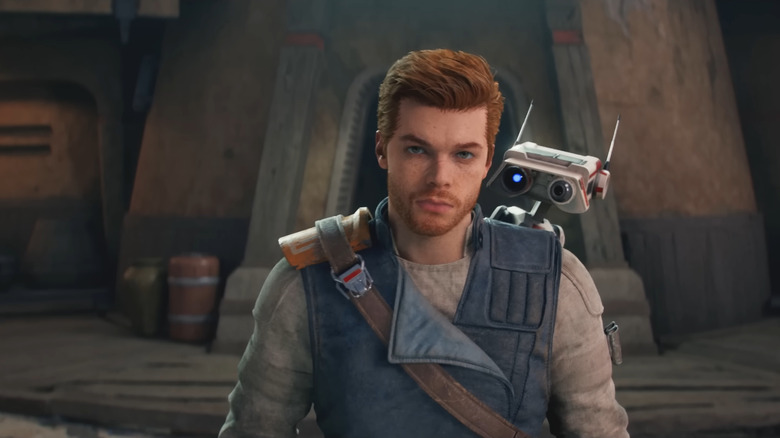How The Reign Of The Empire Quickly Grew Into The Best Star Wars Era
There is a big chance that your favorite era of "Star Wars" is going to be whatever was prominent when you were a kid. For '90s and 2000s kids, that was the Clone Wars era — or as Lucasfilm now calls it, the Fall of the Jedi era. This felt like a truly exciting time for the "Star Wars" franchise, because the movies gave us cool and epic fights with tons of Jedi, incredible worlds, and more, but also video games like "Battlefront" and "Republic Commando" made clones as cool and badass as the Jedi, while both "Clone Wars" and "The Clone Wars" expanded the galaxy, shining a light on the titular war that forever changed it.
Not that there was anything wrong with what Lucasfilm calls the Age of Rebellion from the original trilogy, but those told a familiar and recognizable story of a small band of heroes fighting an evil empire. Meanwhile, the prequels interrogated the hero worship of the originals and presented the Jedi as deeply flawed, the good guys as corrupted, and the conflict as not just black and white, but complicated.
In the past decade, however, more eras of "Star Wars" have come out, like the Rise of the First Order and The High Republic, but none are as poignant, nuanced, resonant, timely, and timeless as the Rise of the Empire — the time between Order 66 and the Battle of Yavin when the Death Star blew up. Shows like "Andor" and "Star Wars Rebels," and games like the "Star Wars Jedi" series have taken the iconography of the original trilogy and expanded the fight against the Empire into something truly powerful and epic.
'Fight the Empire'
In canon, the Reign of the Empire era was rather murky. We saw the Republic fall and be replaced by the Empire, and we saw the results in the original trilogy when they were in power, but already fighting against the rebels. By then, the two warring factions were mostly simplistic "good guys" and "bad guys" but without much in the way of showing why that is, beyond the bad guys having British accents and being so comically evil they literally blow up a planet. The Rebels are good, but we didn't see much in the way of what the regular fighters do, since the focus was on the big missions with the important main characters.
That changed — at least in canon — with "Star Wars Rebels" back in 2014. Originally, Disney's first move after purchasing Lucasfilm was to go back to the original trilogy and do more there, which seemed like rather low-hanging fruit. And yet, both "Rebels" and "Rogue One" proved to be some of the best things the franchise ever did. "Rebels" gave us a look at the early days of the Rebellion, but kept things contained to a small group mostly based in a single Empire-occupied planet. This allowed the show to truly flesh out each character's motivation, to make the stakes feel personal, and to showcase how oppressive the Empire was and why it was necessary to stand up and fight back.
Sure, it was still as much a kids' show as the movies are aimed at kids, yet "Rebels" managed to offer some serious gravitas and poignancy, and together with "Rogue One," the two turned the Rebels from just good guys fighting with the main hero into revolutionary martyrs and heroes in their own right.
'Even the smallest act of insurrection pushes our lines forward'
Recent titles like "Andor," and the two "Star Wars Jedi" games, which focus on resistance fighters at the height of Empire oppression, have turned the Reign of the Empire era into the richest and most thematically resonant. These titles show us why characters fight and how the Empire has ruined everything, giving us some of the most emotional moments in the whole franchise.
"Andor" is by far the most adult and the most mature title in "Star Wars," a show that directly looks at fascism in the face and spits on it before throwing a (censored) f-bomb while the games show the challenges of dedicating your life to the fight and what it does psychologically to never see an end to the struggle. These are not just great stories in their own right, but they made what came before better by making the fall of the Republic impactful and significant. They make what came after better by turning the triumph of Luke, Han, and Leia into a victory decades in the making. When, in the Special Edition ending to "Return of the Jedi" (which got spoiled for audiences before release!) we cut to celebrations across the galaxy, from Tatooine and Bespin all the way to Naboo and Coruscant, it feels like a true and final victory, one that came after countless sacrifices and deaths.
Recent projects have created the era between the first two trilogies into a powerful, uplifting, angry call to action, making this the best and richest era of "Star Wars."


